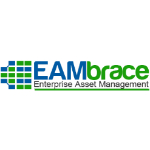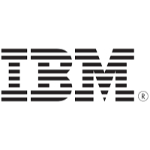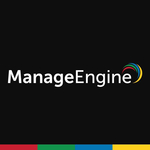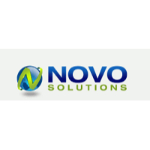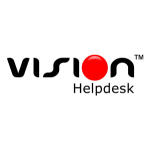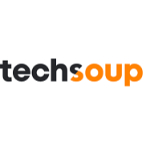TechnologyCounter provides genuine, unbiased real user reviews to help buyers make informed decisions. We may earn a referral fee when you purchase through our links, at no extra cost to you.
List of 15 Best Service Desk Management Software
Showing 1 - 15 of 48 productsRemotePC is a versatile remote access software that allows you to securely access and control your computer from anywhere, at any time. With its user-friendly interface features, RemotePC aims to enhance your remote working experience and make it mor...Read RemotePC Reviews
Olark is a live chat software that helps businesses engage with their customers in real-time. With its user-friendly interface features, Olark makes it easy for companies to provide exceptional customer support and increase conversions. Say hello to...Read Olark Reviews
EAMbrace is a software system designed to simplify and optimize the management of enterprise assets. With its user-friendly interface features, EAMbrace stands out as a top choice for businesses seeking to streamline their asset management processes...Read EAMbrace Reviews
LiveAgent is a customer support and communication platform designed to streamline your business interactions. With an array of features such as real-time chat, email ticketing, and social media integration, LiveAgent provides a seamless is a way to m...Read LiveAgent Reviews
Kayako is a customer service software that streamlines communication and enhances customer relationships. With its user-friendly interface and robust features, Kayako helps businesses provide exceptional support and resolve customer issues efficientl...Read Kayako Reviews
IBM IT service desk, a revolutionary solution to all your technical queries and concerns. With our highly trained team of experts is a systems, we strive to provide seamless IT support to our clients. Say goodbye to frustrating IT issues and let IBM...Read IBM IT service desk Reviews
ConnectWise is a business management platform designed specifically for IT service providers. With its intuitive features and customizable modules, ConnectWise empowers companies to streamline their operations, improve efficiency, and ultimately, enh...Read ConnectWise Reviews
Zendesk is a customer service software that helps businesses of all sizes deliver exceptional support to their customers. Its user-friendly platform streamlines communication through various channels and provides powerful tools for managing tickets,...Read Zendesk Reviews
ServiceDesk Plus is an AI-driven Unified Service Management platform, built to streamline and automate service delivery operations for both IT and non-IT departments, through visual workflows, predictive and generative AI capabilities, and out-of-the...Read ManageEngine ServiceDesk Plus Reviews
Freshservice is a popular cloud-based solution for ITSM (IT Service Management) and ITIL Service Desk. It offers a seamless user experience, combined with advanced capabilities for Ticketing and Asset Management. With a customer base of over 20000,...Read Freshservice Reviews
Novo Service Desk is a solution for streamlining your customer support process. With its user-friendly interface features, Novo Service Desk simplifies ticket management, enhances communication, and allows for seamless collaboration within your team...Read Novo Service Desk Reviews
Faveo is a specially crafted software that serves the unique needs of startups and SMEs, equipping them with an advanced ticket-based support system. In todays fiercely competitive startup industry, customer retention is a significant hurdle to over...Read Faveo HelpDesk Reviews
Atera is a software designed for modern businesses. With its intuitive interface and powerful features, Atera simplifies IT management and boosts productivity. Its innovative technology streamlines tasks, improves response time, and reduces downtime...Read Atera Reviews
Vision Helpdesk is a leading customer support and help desk software that provides organizations of all sizes with efficient and effective tools to manage their customer service interactions. From ticket management to multi-channel support, Vision He...Read Vision Helpdesk Reviews
TechSoup is a leading global non-profit organization that provides technology solutions and support to other non-profits, charities, and libraries. With a diverse network of partners and a wide range of products and services, TechSoup is committed to...Read TechSoup Reviews
- What Is Service Desk Management Software?
- Top Reasons Why Businesses Need Service Desk Management Software?
- What Are the Top Key Features of Service Desk Management Software?
- What Are the Top Benefits of Service Desk Management Software?
- What Are the Steps to Choose the Right Service Desk Management Software?
- What Are the Types of Service Desk Management Software for Different Industries?
- What Are the Technology Trends for Best Service Desk Management Software?
- What Are the Deployment Options for Service Desk Management Software?
What Is Service Desk Management Software?
Service Desk Management Software is a software application utilized for the purpose of effectively managing and organizing helpdesk-related activities. The platform serves as a centralized hub for coordinating incoming requests, analyzing performance metrics, managing issue resolution processes, storing information, and facilitating customer relationship management.
It is frequently employed in the domains of customer care, technical support, IT operations, and asset management. The program facilitates the organization and prioritization of activities, the allocation of workers, and the automation of routine procedures. The programs have the capability to be customized in order to meet the individual needs of the customer care team.
Additional features are available to assist with inventory tracking, customer relationship management, and gathering client feedback. By utilizing the program, users are able to obtain a thorough overview of client tickets and discern areas within the process that require enhancement.
Additionally, service desk management tools has the potential to facilitate enhanced collaboration among staff members, resulting in expedited and more effective communication processes. This, in turn, can automate the exchange of information and guarantee prompt responses to various inquiries and demands.
Service desk management system also offers real-time reporting and analytics capabilities, enabling staff members to effectively assess their accomplishments and obstacles. This facilitates expedited and enhanced problem-solving, provides comprehensive insights into team performance, and aids in the optimization of customer support operations.
When utilized appropriately, the program has the potential to enhance customer satisfaction, uncover strategies for mitigating recurring problems, and ultimately contribute to the organization's efficiency and success.
Top Reasons Why Businesses Need Service Desk Management Software?
1. Increased service delivery performance: Service desk management software is a valuable tool for enterprises as it aids in enhancing service delivery performance through the automation of procedures, the streamlining of workflows, and the provision of enhanced visibility and analytics.
2. Improved customer experience: Service desk management system has the potential to enhance the customer experience for organizations through the implementation of dynamic routing and self-service capabilities. This is achieved by integrating a knowledge base and customer service portal into the platform.
3. Reduced costs: The implementation of a service desk management platform has the potential to assist businesses in mitigating the occurrence of recurring service requests and defects, hence resulting in a reduction in operational costs.
4. Streamlined operations: support desk management software enables firms to centralize and automate IT support operations, thereby facilitating employee access to information and enhancing operational efficiency.
5. Improved IT security: The utilization of service desk management software has the potential to effectively mitigate IT events, including but not limited to data misuse, harmful attacks, and disconnections.
6. Increased visibility: Service desk management tools has the capability to offer real-time data and enhanced visibility into operational performance, hence enabling businesses to make more strategic decisions pertaining to their IT operations.
7. Improved IT compliance: Service desk management software is utilized by enterprises to effectively monitor and manage IT compliance, enabling them to conduct audits and streamline regulatory compliance processes, including those related to HIPAA.
8. Automated processes: The service desk management system facilitates the automation of procedures and workflows, hence diminishing the need for manual labor and enabling personnel to allocate their attention towards tasks that yield tangible outcomes.
9. Fine-tune service delivery: Service desk management software offers the capability to assess and document service performance, enabling organizations to optimize the provision of services.
10. Increased collaboration: support desk management software facilitates enhanced collaboration among IT teams, so enabling them to efficiently and expeditiously address support requests.
11. Improved workflow: Service desk management tools enables organizations to establish tailored workflows and maintain internal process standardization.
12. Advanced reporting: The utilization of service desk management software has progressed to include comprehensive reporting and analytics functionalities, enabling businesses to quantitatively assess key performance indicators (KPIs) pertaining to service delivery.
These KPIs encompass metrics such as call resolution durations, incident and request volumes, and other relevant service-related measurements.
13. Increased self-service: Service desk management software enables users to engage in self-service activities and retrieve their respective request histories.
14. Integration with other systems: Service desk management tools has the capability to enhance its usefulness by integrating with various platforms, including cloud services, business analytics tools, and ticketing systems.
15. Easy access to central repository of knowledge: Service desk management software facilitates access to a centralized knowledge store, enabling IT workers to efficiently identify and provide prompt and precise resolutions.
What Are the Top Key Features of Service Desk Management Software?
1. Service Requests and Incidents Management: Service desk management software offers a valuable solution for effectively monitoring and addressing service requests and events.
The aforementioned functionalities encompass aspects such as the classification of issues, the allocation of requests to the appropriate team, the implementation of automated processes and notifications, as well as the recording of incidents.
2. Knowledge Base: Service desk management system commonly has a centralized knowledge base that enables IT workers to store and retrieve comprehensive information pertaining to the IT infrastructure environment of the firm.
3. Self-Service Portal: This functionality enables customers to search the database of help desk tickets and submit service requests without requiring direct communication with the help desk staff. Additionally, it enables information technology professionals to respond to and oversee client inquiries and demands.
4. Automation: Service desk management software is designed to automate specific administrative duties, thereby optimizing the operations of a service desk and enhancing overall productivity.
5. Reporting: The software commonly incorporates many reporting and analysis functionalities, including event impact analysis, request tracking, and information pertaining to service availability.
6. Integrations: Numerous service desk management tools have the capability to integrate with external applications, enabling IT employees to conveniently retrieve and oversee data from various origins.
7. Service Level Agreement (SLA) Control: The service desk management system offers a functionality that guarantees the timely handling of client requests and prevents any violation of service level agreements.
8. Security: The preservation of security is of utmost significance in top service desk management software, as it encompasses many elements aimed at safeguarding client data and facilitating secure system access.
What Are the Top Benefits of Service Desk Management Software?
1. Improved efficiency: The implementation of top service desk management software has the potential to enhance organizational efficiency through the automation of operations and the facilitation of streamlined communication between teams and users.
2. Increased visibility: The system offers immediate access to up-to-date information on ongoing tickets, pending permission requests, performance indicators, and other relevant data, hence facilitating enhanced decision-making capabilities.
3. Simpler access control: The utilization of the best service desk management software facilitates the streamlined management and monitoring of access control for both technicians and end-users.
4. Enhanced security: The system offers sophisticated security functionalities, including multi-factor authentication and two-way data encryption, in order to safeguard confidential data.
5. Extensibility: This particular software possesses the inherent flexibility and adaptability to effectively accommodate and expand in accordance with the unique requirements of diverse enterprises.
6. Faster resolution times: By implementing an appropriate service desk solution, organizations may efficiently address customer concerns and requests in a timely manner.
7. Cost savings: Top service desk management software has the potential to decrease expenses by requiring fewer resources for service provision.
8. User-friendly: Service desk solutions are frequently developed with interfaces that prioritize intuitiveness and user-friendly navigation, hence facilitating users in the execution of activities.
What Are the Steps to Choose the Right Service Desk Management Software?
1.The purpose of this inquiry is to ascertain the goals and objectives of the best service desk management software. It is imperative to ensure that the software adequately caters to the present requirements of the firm and possesses functionalities that may accommodate future needs.
2. Conduct a comprehensive investigation into the many software alternatives that are now accessible. Conduct a thorough examination of feedback provided by current clients and IT professionals, and engage in inquiries to ascertain the distinct attributes and functionalities of each respective solution.
3. In order to effectively plan and execute a project, it is crucial to ascertain the budgetary constraints, available resources, and timetable. This process will assist in refining the options to exclusively encompass the most suitable solutions.
4. In order to proceed with the project, it is necessary to compile a comprehensive list of needs and subsequently prioritize the various aspects. Utilize a score system to evaluate each software alternative, thereby facilitating an objective comparison and selection process.
5. In order to gain comprehensive insights into the functionality and potential drawbacks of the program within the organizational context, it is imperative to conduct user testing in an authentic environment.
6. Conduct a comprehensive cost-benefit analysis of available alternatives in order to maximize the utility derived from financial resources.
7. The organization should proceed with the decision-making process and afterwards execute the implementation of the software. Implement a comprehensive staff training program to facilitate a seamless transfer to the new system.
8. In order to ascertain if the software aligns with its intended objectives and anticipated outcomes, it is imperative to actively monitor and measure its usage and efficacy.
What Are the Types of Service Desk Management Software for Different Industries?
There are several types of best service desk management software for various industries.
1. Help Desk Software: These systems encompass a range of features like ticket submission, issue tracking, self-help knowledgebases, customer feedback portals, IT asset management, and various other functionalities.
These systems are specifically engineered to optimize the efficiency of customer service processes and enable teams to deliver easily accessible assistance to customers.
2. Incident Tracking Software: This particular software facilitates the efficient exchange of information between customer support staff and clients, enhancing the efficiency of incident and case reporting procedures. Additionally, it aids in the prompt resolution of complaints.
3. Project Management Software: This facilitates the maintenance of organizational structure and enables the monitoring of project advancement inside IT departments.
The features encompassed in this software package consist of email integration, task scheduling and time tracking capabilities, Gantt chart-style project plans, SaaS server management functionalities, customization options for self-hosted projects, and additional features.
4. Knowledge Base Software: This practice is vital for enterprises of varying scales, and holds special advantages for organizations that own extensive consumer populations. The utilization of this system facilitates the effortless storage, administration, and retrieval of customer service data and support materials by teams.
5. Analytics Software: This facilitates teams in acquiring the necessary data to enhance their customer service procedures. The system monitors various important parameters, including customer feedback, service level agreements (SLAs), backlog, customer success rate, and other relevant indicators.
The selection of top service desk management software is contingent upon the unique requirements of each respective sector.
What Are the Technology Trends for Best Service Desk Management Software?
The technology advances pertaining to the best service desk management software revolve around various significant facets.
1) Automation and AI capabilities: The integration of automation and artificial intelligence (AI) technologies enables a streamlined service desk process, resulting in enhanced efficiency and a reduction in the need for manual labor.
Automated systems provide the capability to promptly recognize and address inquiries, hence enabling expedited ticket resolution and an enhanced customer experience in its entirety.
2) Cloud-based platforms: Cloud-based technologies provide several benefits, including enhanced scalability, reduced initial expenses, and improved accessibility. Service desk management software possesses the capability to be used remotely from any location, hence ensuring its accessibility.
Additionally, it exhibits the ability to be swiftly expanded in capacity as required within a certain timeframe.
3) Integrations with other systems: The seamless integration of service desk management tools with various systems, including customer relationship management (CRM) systems and help desk solutions, is crucial for enhancing the collaborative and efficient operations of the service desk.
4) Security: The consideration of security holds significant importance in the process of picking service desk management system. Reputable systems typically incorporate multiple layers of security, encompassing robust authentication mechanisms and encryption algorithms.
5) Support channels: Service desk management tools should provide a range of help channels, including email, chat, and telephony, to facilitate customer communication and address their inquiries. This affords clients the opportunity to select the most suitable channel for their communication.
What Are the Deployment Options for Service Desk Management Software?
Service desk management software offers several deployment choices, including cloud-based (Software as a Service or SaaS), on-premise, and hybrid models.
1. The cloud-based software-as-a-service (SaaS) option is frequently favored due to its lack of hardware installation, maintenance, and additional storage needs, making it a more economically viable solution.
2. On-premise software necessitates a localized installation on updated and dedicated hardware, commonly employed by enterprises that prioritize hardware control in their operational processes.
3. The hybrid architecture enables enterprises to leverage the cloud-based version for software hosting, while also utilizing on-premise hardware for support and access purposes. This paradigm offers a combination of advantages, enabling firms to leverage the benefits of both solutions simultaneously.


